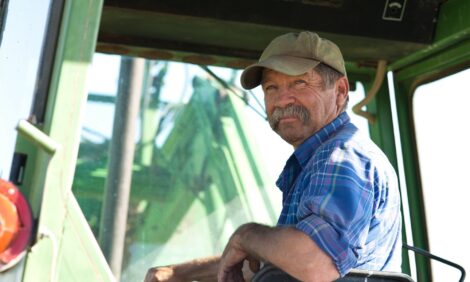



Hogs & Pigs Report Slightly Bearish
US - USDA’s quarterly Hogs and Pigs Report, released Wednesday afternoon, indicates modest growth across the board for hog numbers and production, writes Steve Meyer.The fact that every key number in the report was slightly larger than analysts’ pre-report estimates leads me to believe it is bearish. But Wednesday’s pre-report sell-off may have largely accounted for the bearish impact.

Some key numbers and their implications include:
- The 1 September breeding herd, at 5.806 million head, was 36,000 head larger than last year and 3,000 head larger than on 1 June. That growth is just about what I expected, but the 0.6 per cent increase is somewhat larger than the average of analysts’ pre-report estimates, so it will put some pressure on deferred contract months.
- The market herd of 60.793 million head was 1 per cent larger than last year and represents a pretty typical increase from June to September. The largest percentage increase was in the 180-lb.-and-over category with lighter weight inventories not significantly larger than last year.
- The 180-lb.and-over inventory agrees reasonably well with slaughter figures since 1 September.
- The report is very consistent regarding farrowings, litter size and pig crop for the June-August quarter. All three numbers fit together well and reflects a 0.7 per cent increase in pigs saved during the quarter vs. one year ago.
- The report differs markedly from the June report in terms of farrowing intentions. While the year-on-year comparisons for farrowings in September-November and December-February are still smaller than is the year-on-year comparison for the breeding herd, they indicate farrowings at or above last year’s level and are, in my opinion, reasonable given the possible negative impact that this summer’s heat may have had on conception rates and, consequently, November and December farrowings.
- Actual June-August farrowings were indeed larger than was indicated by the intentions in the June report – by 34,000 litters. That number times 10 pigs/litter accounts for 340,000 pigs or 1.2 per cent of the June-August pig crop.
- Farrowing intentions for the September-November quarter are 17,000 higher in this report than in the June report. While that number may be limited by summer breeding performance, I would not be surprised to see slightly more actual farrowings reported in the December report.
- Litter sizes keep improving at a steady 2 per cent or so. The June-Aug. average for pigs saved /litter was the highest ever for that quarter, tying the all-time record of 10.03 set in March-May.
Hog Supplies, Price Projections
I expect Q4-2011 supplies to be very close to those of 2010 and for national net negotiated prices (carcass weight basis) to be in the low- to mid-$80s. Quarterly slaughter will grow relative to 2011 levels as we progress through 2012 with Q1 up a short 1 per cent, Q2 up 1.5 to 2 per cent, and Q3 2 per cent or so higher than this year. Prices will remain relatively strong – from the mid-$80s in Q1 into the low- to mid-$90s in Q2 and Q3.
I am making one huge assumption in these forecasts and that is that hog demand will remain at about the same level as this year. That would require the positive impacts of competitor goods’ prices and growing economies in major export markets to offset the likely negative impact of a soft US economy. I believe the current strengthening of the US dollar is a short-term "flight to safety" reaction such as we have seen on other occasions over the past few years. But, this situation could be repeated should more debt crises develop in the European Union zone and, we all know that the probability of that is relatively high.
Check Your Feed Needs
Producers still need to focus on the current markets’ big opportunity to buy major feed ingredients at much lower prices. My model says that the sell-off in corn and soybean meal futures over the past two weeks have taken breakeven costs of production for the next 12 months down by over $6/cwt., carcass. December corn is nearing key support around $6.20 and July corn is nearing similar support near $6.50. Should prices stabilize in these areas, the sell-off may be over. But should they penetrate these support levels, the next support levels would be at $5.75 and $6.05 for December and July, respectively.






